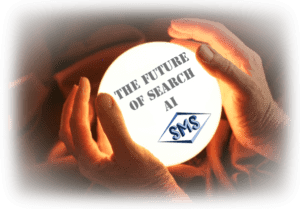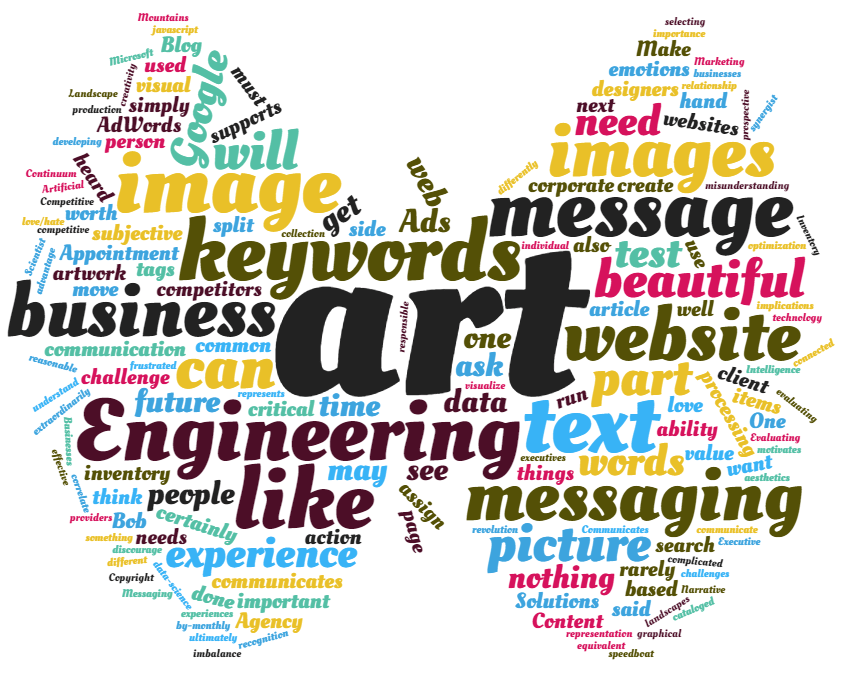Two words that rarely go together are Art and Engineering, yet here we are. The idiom “A picture is worth a 1,000 words” is true in website experiences. Businesses spend lots of time engineering the text but not so much the art. Business invests in the visuals but the focus is on the aesthetics, not how it supports the message. We have seen plenty of websites with beautiful mountain landscapes with a message of grow your business. Mountains are not an image that screams rapid growth to me. I would be inclined more toward a race car or speedboat. Yet it is easy to argue that artwork & images are responsible for 80% of the messaging. Why the imbalance between importance and effort? Great question, let’s peel this one open. The art of Art is outside of the article scope as we explore the data-science of art.
A Picture is Worth 1,000 Words
As a Data Scientist, I have a love/hate relationship with designers. On one hand, I love their creativity and ability to create beautiful images. On the other, I am frustrated by challenges they do not understand or simply do not value. Art is truly in the eyes of the beholder but the art on your website needs to serve the corporate message. While the text is more important for SEO purposes, images are what move the emotion of the visitor. The 80/20 rule applies in a web experience: 80% of the impact is graphical and 20% is text. The bottom line is, for the website to be competitive, the text and images need to be synergist and both have to be extraordinarily well done.
Competitive Art Landscape
When developing the strategy for a new client, we ask them for 3-5 of their competitors. We then analyze and compare the homepage of the client and each of their competitors. This gives us a visual representation of the web experience the prospective customer will have while shopping. When the images & artwork are effective they have meaning and huge value in the experience.
Art Inventory
All plans need a baseline and for image engineering this is your art inventory. This is simply a collection of the art that is part of the web experience. As this is cataloged, you want to evaluate the message contained and assign it a grade based on how well that message is portrayed. The message you want to convey will dictate what images you ultimately use. This is often when a light bulb goes off when you have a piece of art you like but it communicates nothing.
Keyword Tagging Art
With the art, inventory collected the next step is to tag it. You start with your targeted keywords and assign them to art based on the messaging within the art. There is some art that will be part of your messaging but not part of your keywords. Common things in this category are things like a response design element. These are items like a call, learn more or other action items. It would not make sense to go after these on the keyword side but they certainly need to exist so you create keywords for the action. Some art, for example, logos, are not in your paid keywords but maybe they should be.
Art That Communicates Nothing
This is probably the most common challenge that we see on websites. The art is beautiful and designers and people love it but if it communicates nothing or worse it’s off message. This is a hard reality that many businesses need to address. Starting with the biggest picture ask yourself what is the message. Write down the words you think this represents and ask others to do the same. One common problem with art is “What you said is not what I heard” and like all communication, it has to be clear and concise. If a picture is worth 1,000 words then the care in selecting art should be intense and critical.
Art Exists on a Continuum of Power
When evaluating business art, we must consider that while art may be more powerful. It is also more subjective and complex. Messaging that motivates one individual may discourage another and the “What I said may not be what you heard” is a challenge. Art has the ability to move emotions and communicate facts quickly. This can be used to your advantage. It is also less precise and subject to more misunderstanding.
Split Testing Art
If Art is nothing else it is subjective and everyone takes something different from the exposure. So I have to wonder why we test text all the time but rarely do we test Art. A simple javascript on the page can easily set up a split test and Google Ads natively supports split testing. So the next time you are in a meeting arguing over which art is better why not test and let the market decide.
 Art and the Word Cloud
Art and the Word Cloud
Evaluating art and keywords can get complicated real fast. One tool I like to use in this process is a word cloud. It makes it easier to visualize the text data and I can base this on my Google Ads data or as I did, in this case, the website text. If I am missing these critical concepts in the art then there is still work to be done. It is important to sync the messaging in the text and art in order to get maximum effect from both.
Gazing into the Future – AI and Art
AI (Artificial Intelligence) is rolling into our world and image processing is certainly part of that revolution. While there will be debate about the implications to search optimization, a reasonable person must assume that AI image processing with be part of the indexing of a website. So look to the future, run your images through this page and see how it tags the image.
https://azure.microsoft.com/en-us/services/cognitive-services/computer-vision/
Then take the photos with faces and run it through this to see the emotions connected to each of the people in your corporate image. While there are no steady rules involved in this, your visual image tags should strongly correlate to your keywords.
https://azure.microsoft.com/en-us/services/cognitive-services/face/
Even if today’s production search engine is not using this type of technology we can assure you that in the near future it will. The examples given here are Microsoft AI Solutions but all the major providers like Amazon’s AWS and IBM’s Watson have equivalent image tagging and facial recognition tools.
https://aws.amazon.com/rekognition/
https://www.ibm.com/watson/services/visual-recognition/demo/#demo
The future is today so you can lead follow or get out of the way. Your choice.
Wrap it Up and Put a Bow on it
Art used for business communication needs a lot of experts. Agencies have forever had art and copy people because they have to think differently. Today you have to add a data person and business executives to those teams.





